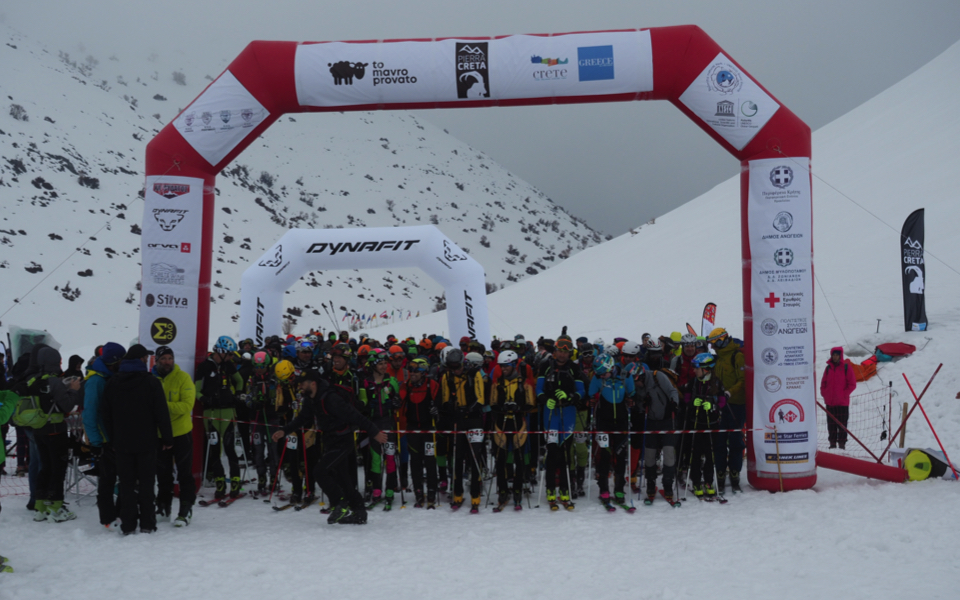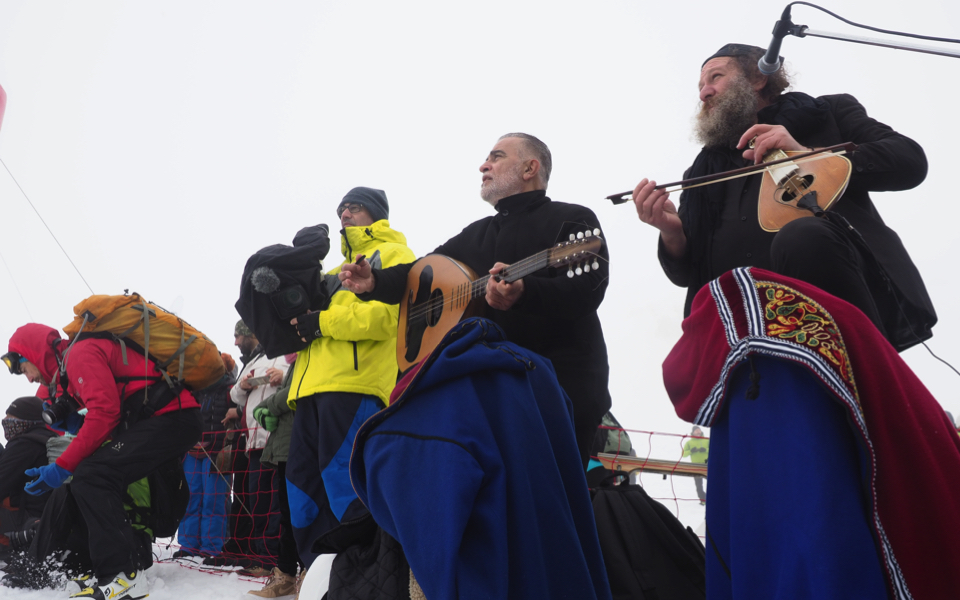Reshaping the skiing map of Europe


On March 3, a very special event took place in the Psiloritis mountains on Crete: the southernmost ski mountaineering competition in Europe, called Pierra Creta. More than 200 skiers from across Europe had gathered in the mountain villages and met each other on the slopes. Ski mountaineering is skiing with alpine skis that allows you to walk uphill with skins under your skis, and ski down steep mountainsides as you would on alpine skis. The sport is very dear to Norwegians. The Norwegian delegation counted six, including myself, from the Norwegian Embassy in Athens.
When I learned about the competition a year back, I just knew I had to go. This is an event that redefines the skiing map of Europe – this time including Crete.
More than 150,000 Norwegians visit Crete each year, which is quite a percentage of the holiday trips our country of 5 million people take. However, few think of mountains and skiing when they book a trip to Crete. Pierra Creta will create a lot of interest in Norway, and will surely contribute to efforts to make Greece a year-round destination.
The beauty of ski mountaineering is that your skis can take you deep into the mountains, far away from other people, to enjoy the peace and quiet. The Norwegians and Cretans were not alone on the mountain on the weekend of the competition, however. On the Saturday, a ski school for kids was taking place on the flatter slopes, run by the NGO To Mavro Provato. Giorgios Klaoudatos, who runs a local ski shop, also wants to make sure local children have an opportunity to learn how to ski – to benefit from the great opportunities these mountains offer in winter and summer, and perhaps also to create new forms of tourism here.
Learning to ski not only offers these youngsters – and adults who take up the activity – access to this great mountain range, it also means developing a range of skills. In order to go backcountry skiing, you also need to learn other things beyond the skiing part. You must be able to protect and save yourself, you need to be able to read the mountain and the weather, you should know about avalanches, and you should know basic first aid. You need to know how to use special gear like the shovel, avalanche probe and beacon, and how to read maps and use a compass. This high up, the weather changes in the blink of an eye, and this equipment is all mandatory for Pierra Creta.
This year’s Pierra Creta participants got a firm reminder just how unpredictable the mountain can be. The Saturday was a beautiful day. Many had come a day or two early to enjoy some Cretan skiing as it is still very much a novelty to most. On the Sunday, however, the weather took a turn for the worse. Strong winds and dense fog meant that the race had to be delayed. It didn’t get much better, but the organizers decided to modify the course, take some extra safety precautions, and go ahead anyway. The participants were delighted, and put in a huge effort and raced against the weather. Everyone was happy and praised the organizers. While waiting for the race to start, participants got to enjoy Cretan singing and dancing by local performers – and to sample the special Pierra Creta “energy drink” (raki mixed with honey).
In fact, the entire Pierra Creta weekend was filled with Cretan culture, food and hospitality, which made a fantastic backdrop for the amazing skiing. The race itself has two different levels – one that involves 1,800 meters of elevation, and a lower one with 900 meters of elevation. It might sound challenging – but the organizers make sure it is more fun than hard work. Because of the conditions, all participants did the 900 meters elevation race this year. Psiloritis just wasn’t welcoming anyone to the summit that day.
At the embassy we are very happy that this year’s Pierra Creta marked the beginning of a new partnership with Greece. Among the participants were a small team from Tromso, a Norwegian city north of the Arctic Circle. They came to Greece to cement the partnership between Pierra Creta, the southernmost ski race in Europe, and its northernmost counterpart, Skittentind Rando, which takes place in Tromso in April every year.
The Norwegian team came in third. According to Kristoffer Forsberg Olsen, one of the two bronze medal winners, “we experienced a skiing paradise, little known to Norwegians. Our experience was that the Greeks really know how to organize a ski mountaineering race. The slopes were well marked, there were friendly faces all along and a party spirit throughout. We recommend that all our skiing friends come to Crete, and we will be back for Pierra Creta 2021!”
The president of the Tromso randonnee association, Frank Holen, was also very pleased both by the results of the team from his club, and the new partnership: “Our athletes that participated had an outstanding time in Crete this weekend. We are so excited to launch this cooperation between the southernmost and northernmost races in Europe. Both competitions are truly unique and are supported by a local enthusiasm that I believe has the potential to bring about great benefits for the local communities and the sport of ski mountaineering both in northern Norway and on Crete.” The race in Norway, like that on Crete, is both a cultural as well as a nature experience of first class. In Tromso they are looking forward to welcoming the Pierra Creta organizers. “They will get to experience the best of spring skiing on northern powder. We can guarantee a proper sea-to-summit experience,” promises Holen.
As Norwegians, we seek out opportunities to ski. I must admit I was very excited to learn that my new posting as deputy head of mission would also involve opportunities to ski. Ski mountaineering is big in Norway. It was where ski mountaineering originated – at least that’s what we like to think. The sport is still growing – both among Norwegians and foreigners who come to Norway to do it. Pristine nature is more appreciated than ever in our hectic, connected lives. When you ski into the mountains, you have to work harder and climb steeper, but the reward is priceless. It has been great to get to know some of the ski mountaineering community in Greece, and both I and the other Norwegians want to participate in the next Pierra Creta. At the embassy we will do what we can to get the word out – and hopefully the Norwegian participation will be even bigger in 2021.
Elisabeth Lothe is deputy head of mission at the Royal Norwegian Embassy in Athens.





